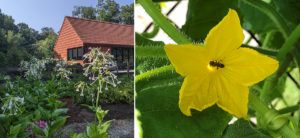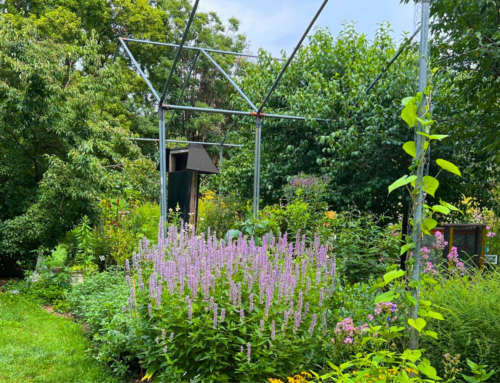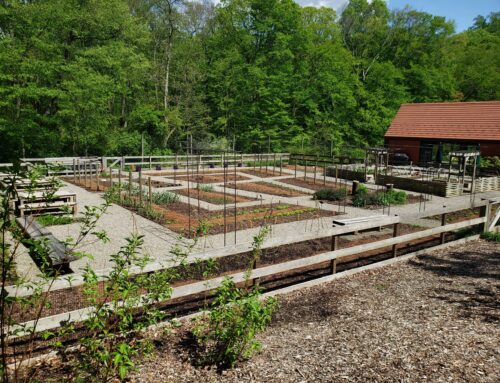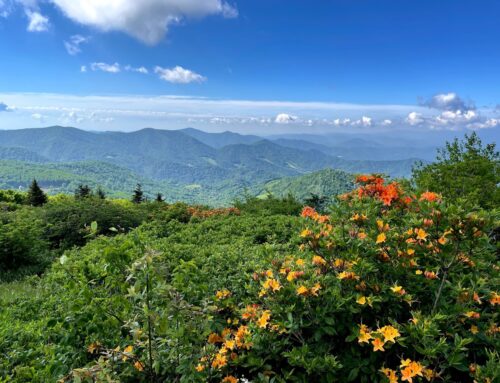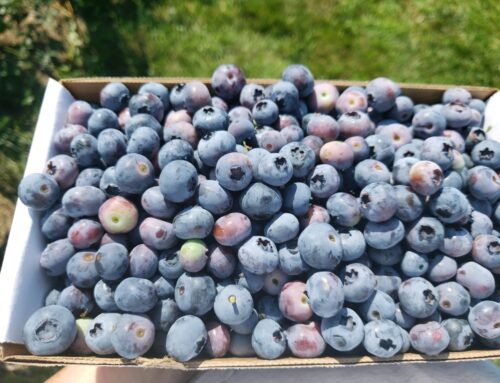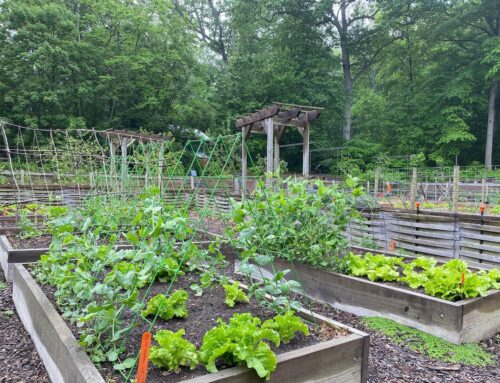In North America, we have “managed” bees and “native or wild” bees. Native bees are those species that are native to a specific region. The blue orchard bee, mason bee, leafcutter bee and bumblebee are examples of native pollinators. Managed bees were introduced to North America and are kept today by beekeepers in the United States for their honey, beeswax and pollination services. You can learn more about beekeeping at Tyler in our blog! The European honeybee is the primarily managed pollinator in the United States today.
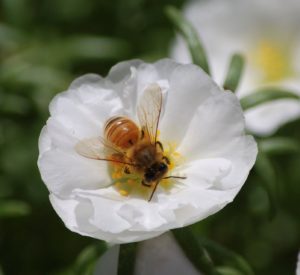
Eastern honey bee Apis cerana
The decline of the European honeybee in the United States has been well documented and publicized in recent years. In contrast, the status of the more than 4,000 species of native bees in North America and Hawaii remain relatively unknown.
For the first-of-its-kind analysis, the Center for Biological Diversity conducted a systematic review of the status of all 4,337 North American and Hawaiian native bees. The key findings were:
- Among native bee species with sufficient data to assess (1,437), more than half (749) are declining.
- Nearly 1 in 4 (347 native bee species) is imperiled and at increasing risk for extinction.
- A primary driver of these declines is agricultural intensification, which includes habitat destruction and pesticide use. Other major threats are climate change and urbanization.
Twenty to forty percent of native bees are pollen specialists, meaning that they use only pollen from one species (or genus) of plants. This restricted diet is due to bees of a certain size, tongue length or ability to vibrate flowers at a specific frequency (buzz pollinators). If that specific plant is removed, the bees go away. If bees are removed, the plant doesn’t reproduce.
Pollination is the process of transferring pollen (small yellow grains) from one flower to another. This transfer of pollen makes it possible for plants to produce seeds, and seeds make it possible for new plants to grow. Pollen sticks to the bees’ hairy bodies and thus they collect the pollen and the sweet liquid nectar (licked up using their tongues) inside flowers to feed themselves and their young. In the process of pollination, everyone wins – plants, humans and bees.
Despite the astonishing variety among bees in North America, most conversations about bee conservation center on a single, largely agricultural species. Imagine if we did the same thing with birds — we’d be trying to raise more turkeys on farms out of concern for massive declines in the overall bird populations. To be clear, honeybees are suffering declines. Thirty-eight percent of managed honeybee colonies in the U.S. were lost during the winter of 2018-2019. Honeybees stand a chance because of humans managing their population. Native bees don’t have that kind of support system.
Honeybees and native bees share most of the same threats to their survival, with the loss of quality habitat topping the list. Many of the strategies to help save native bees will also help honeybees and vice versa. Yet, we must be cautious that saving the honeybees does not become the sole focus of conservation efforts or communication.
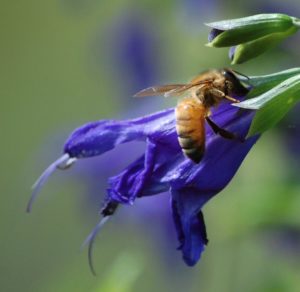
Honeybees provide pollination for a relatively small percentage of native flower species (estimates range for 25-40% throughout the world). Thus, to conserve the full species diversity and resilience of our ecosystems, we need our native bees.
Bees play a part in every aspect of the ecosystem. They support the growth of trees, flowers and other plants which serve as food and shelter for creatures large and small.
Bees facilitate reproduction and improve seed set for half of Pennsylvania’s and New Jersey’s top fruit and vegetable commodities. Bees are important to our food supply. Without them, our gardens would be bare and our plates empty. One in every three bites of food we eat is made possible by bees. Native bees are the primary pollinators, and they significantly supplement the activity of honeybees. Even crops like cotton, soybeans and peppers that don’t need a pollinator have a higher yield if they’re visited by bees. We need bees for food security and to maintain a healthy ecosystem.
The majority of native bees nest in the ground, so they are vulnerable when natural areas are converted to tilled agricultural fields or paved over. Providing ample and safe nesting areas for native bees is therefore vitally important for their survival. You can find evidence at Tyler of Native Bee homes in both Lucille’s Garden and the Butterfly House landscape.
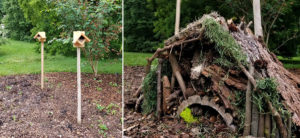
Native Bee Adobe and Native Bee Home
Increasing the size and quality of habitat for pollinators will boost populations of all bees. Plant diversity in natural areas and agricultural landscapes needs to be protected and restored so that nectar and pollen resources are abundantly available throughout the year. Pollinators rely on habitat size, habitat connectivity and plant diversity.
At Tyler Arboretum in Lucille’s Garden, we realize the truth of the statement made by Pavan Sukhdev in his United Nations report, The Economics of Ecosystems and Biodiversity: “Not a single bee has ever sent us an invoice. And that is part of the problem – because most of what comes to us from nature is free; because it is not invoiced, because it is not priced, because it is not traded in markets, we tend to ignore it.”
That is why we have flowers in Lucille’s Garden, an edible garden. The presence of flowers in the garden is consistent with a garden designed for food. Yes, some flowers can be eaten. Yet, even more to the point, we are feeding the pollinators and they, in turn, feed us. With them comes an increased yield of our vegetables and fruit. In addition, scent and sight add a depth to the garden. So, this year especially, we have added many more flowers and more varieties to Lucille’s Garden, including Pot Marigold (Calendula), Coneflower (Echinacea), “Sheffield” Mum, “Jeanna” Phlox, Bee Balm (Monarda didyma), “Burgundy Mist” Lance-Leaved Loosestrife (Lysimachia lanceolata), Appalachian Blazing Star (Liatris microcephala), Rattlesnake-Master (Eryngium yuccifolium), “Dwarf Pacino Gold” Sunflower (Helianthus annus), “First Light” Willow Leaf Sunflower (Helianthus salicifolium), and “Prairie Glow” Brown-Eyed Susan (Rudbeckia triloba), among others. When it comes to Lucille’s Garden, the hum of bees will be the voice of the garden.
At Lucille’s Garden we are waking up to the world as it is, so we may be a part of creating a better world for all, including those with two sets of wings. Because we know this to be true, “The way humanity manages or mismanages its nature-based assets, including pollinators, will in part define our collective future in the 21st century…the fact is that of the 100 crop species that provide 90 % of the world’s food, over 70 are pollinated by bees.” – Achim Steiner, Executive Director UN Environment Programme (UNEP).
The decline in bees that we are seeing worldwide – and in our backyards – is nature sending us the invoice from these incredibly hard-working creatures. The question now is how will we answer it? How high a price are we willing to pay?
